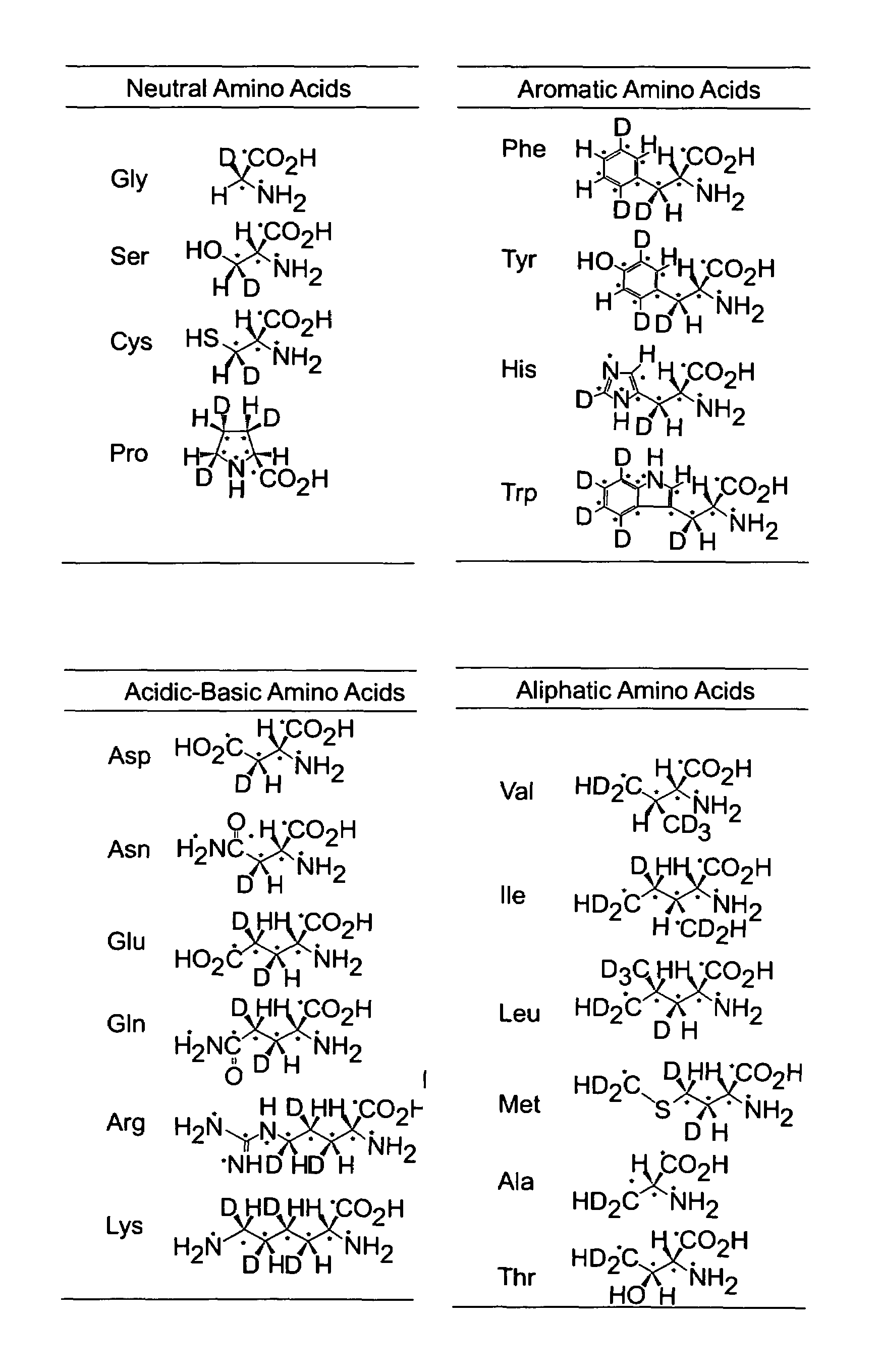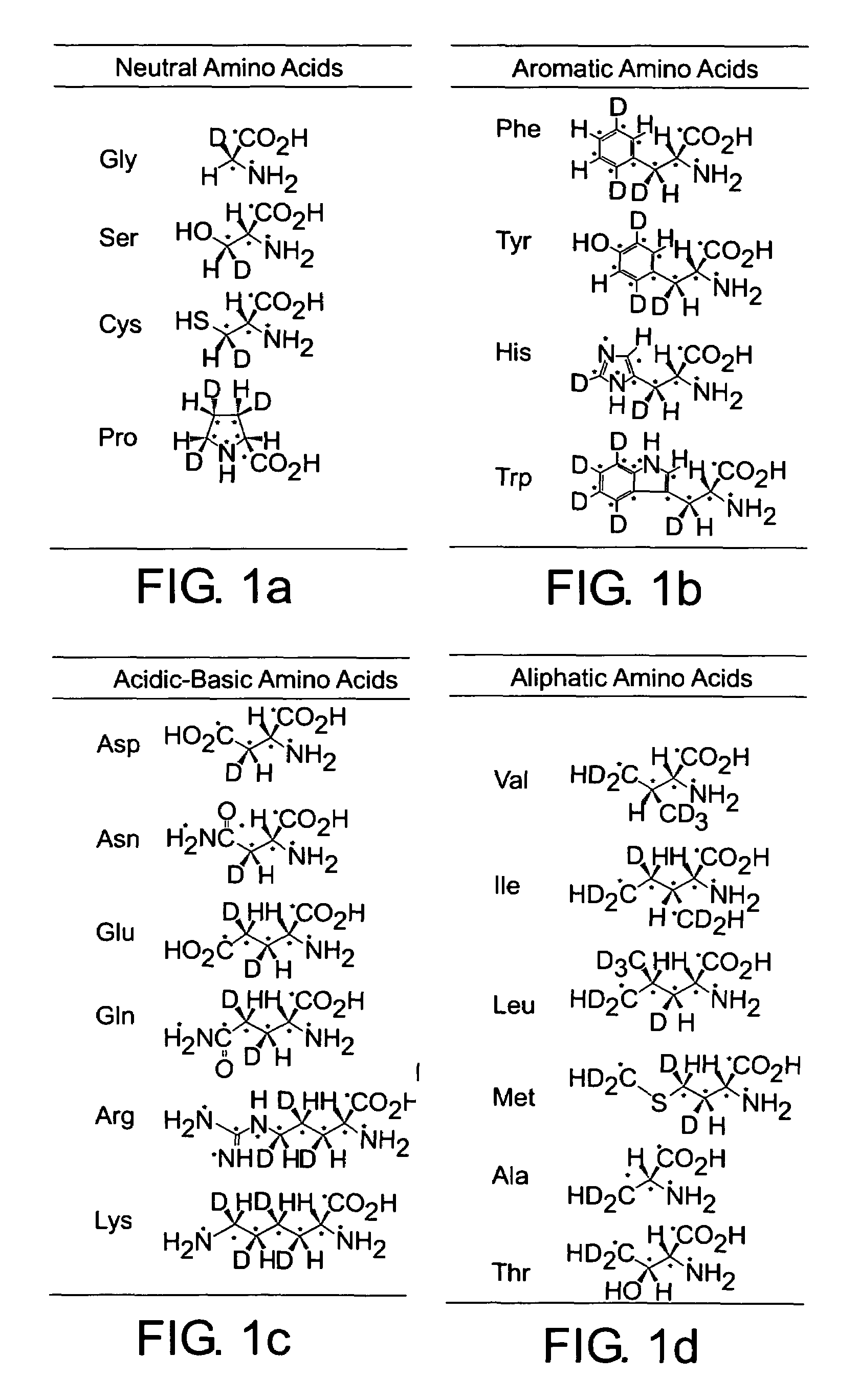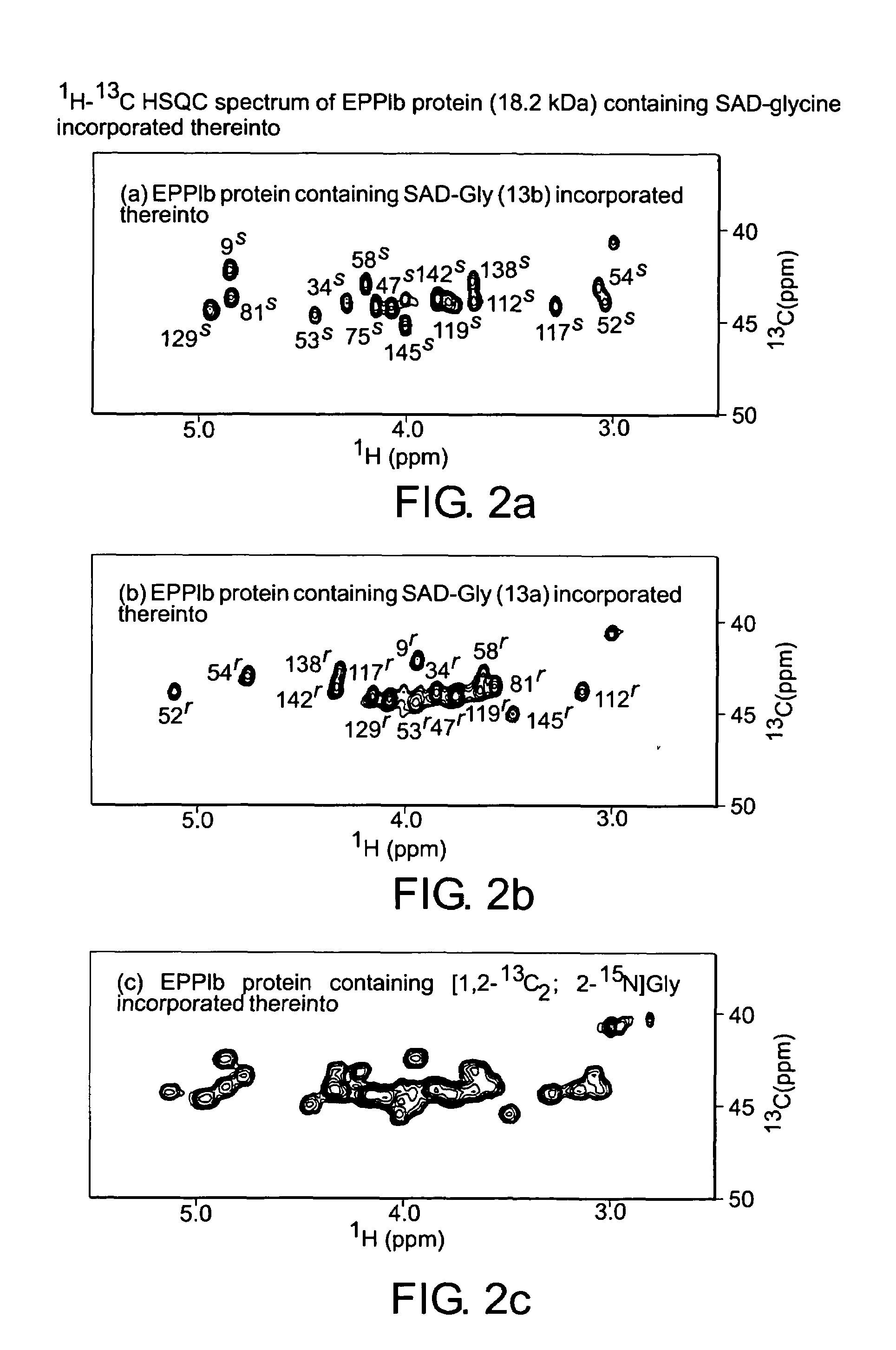Stable isotope-labeled amino acid and method for incorporating same into target protein
a technology of stable isotope-labeled amino acids and target proteins, which is applied in the direction of organic chemistry methods, isotope introduction to acyclic/carbocyclic compounds, peptides, etc., can solve the problems of high cost of stable isotope-labeled fumaric acid, sharp difficulty in implementing a sharp technique, and limited subject and utility of conventional methods, etc., to achieve high-performance determination of stereostructure and rapid analysis of nmr
- Summary
- Abstract
- Description
- Claims
- Application Information
AI Technical Summary
Benefits of technology
Problems solved by technology
Method used
Image
Examples
example 1
Preparation of Protein Containing SSD-Glycine Incorporated thereinto and NMR Determination
[0094]Steps 1 to 12 illustrate the synthesis of stereo-selectively mono-deuterated (2S)-[1,2-13C2;2-15N;2-2H]glycine (hereinafter referred to as SSD-glycine) according to the following scheme 1:
[0095]
[0096]Compound (2) (12.55 g, 48.2 mmol, 87%) was obtained from [ul-13C6]-glucose (10.06 g, 55.8 mmol) (1) with reference to a method disclosed in a literature (K. P. R. Kartha et al., Tetrahedron Lett., 27, 3415, 1986).
[0097]Compound (2) (12.55 g, 48.2 mmol) was converted to compound (3) (22.08 g, 44.3 mmol) by a method disclosed in a literature (Nicolaou et al., J. Am. Chem. Soc., 110, 4673, 1988). 300 ml of 80% acetic acid was added to compound (3) to obtain a solution. After removing the protecting group at 75° C. for 3 hours, the reaction mixture was cooled to room temperature and then concentrated under reduced pressure. The azeotropic process with ethanol was repeated 4 times to obtain compou...
example 2
Preparation of Protein Containing SAD-Lysine and NMR Determination
[0111]The synthesis of (2S,3R,4R,5S,6R)-[1,2,3,4,5,6-13C6; 2,6-15N2; 3,4,5,6-2H4]lysine (hereinafter referred to as “SAD-lysine) in steps 13 to 16 will be illustrated according to the following scheme 2:
[0112]
[0113](2S, 3S, 4R)-[1,2,3,4,5-13C5; 2-15N; 3,4-2H2]glutamic acid (hereinafter referred to as SAD-glutamic acid) (14) (25.02 mmol) derived from uniformly 13C-labeled L-glutamic acid by a method descried in a literature (M. Oba, et al., J. Org. Chem. 64, 9275, 1999) was dissolved in 0.2 M solution (200 ml) of pyridine hydrochloride in deuterium oxide. The pH of the obtained solution was adjusted at 5 with pyridine containing pyridoxalphosphate (200 mg) and dithiothreitol (120 mg). Glutamic acid decarboxylase (1000 U, 210 ml) was added to the solution and the obtained mixture was stirred at 37° C. for 3 hours while shielding the light. The obtained reaction mixture was concentrated at a temperature of not higher tha...
example 3
Preparation of Protein Containing SAD-Glutamine and NMR Determination Thereof
[0121]The synthesis of (2S,3S,4R)-[1,2,3,4,5-13C5; 2,5-13N2; 3,4-2H2]glutamine (hereinafter referred to as “SAD-glutamine”) in step 17 will be illustrated according to the following scheme 3:
[0122]
[0123]Concentrated sulfuric acid (55 μl) was added to methanol (1305 μl) and they were cooled to −5 to −10° C. The obtained solution was fed into a 2 ml vial containing SAD-glutamic acid (14) (98 mg, 719 μmol). The obtained mixture was stirred at −4° C. for 1 hour and then at room temperature for 2 hours. After the completion of the stirring, 156 μl of carbon disulfide was added to the reaction mixture while the temperature was kept at 0° C. 15N-labeled ammonia gas was introduced into the vessel for 14 minutes. After leaving them at room temperature for 10 days, methanol was added thereto and crystals thus formed were taken by the filtration. The filtrate was concentrated and then dissolved in distilled water. Aft...
PUM
| Property | Measurement | Unit |
|---|---|---|
| temperature | aaaaa | aaaaa |
| optical purity | aaaaa | aaaaa |
| temperature | aaaaa | aaaaa |
Abstract
Description
Claims
Application Information
 Login to View More
Login to View More - R&D
- Intellectual Property
- Life Sciences
- Materials
- Tech Scout
- Unparalleled Data Quality
- Higher Quality Content
- 60% Fewer Hallucinations
Browse by: Latest US Patents, China's latest patents, Technical Efficacy Thesaurus, Application Domain, Technology Topic, Popular Technical Reports.
© 2025 PatSnap. All rights reserved.Legal|Privacy policy|Modern Slavery Act Transparency Statement|Sitemap|About US| Contact US: help@patsnap.com



